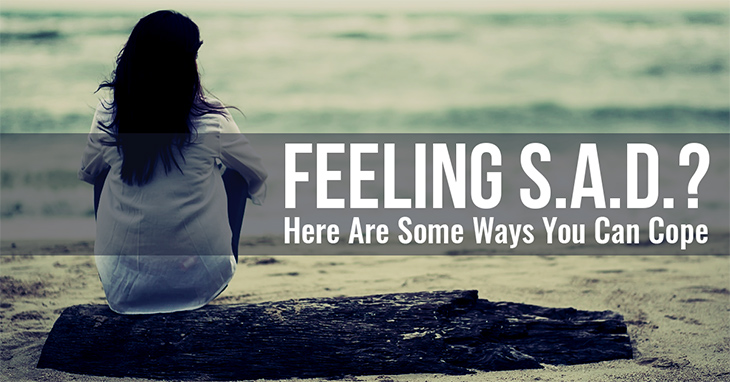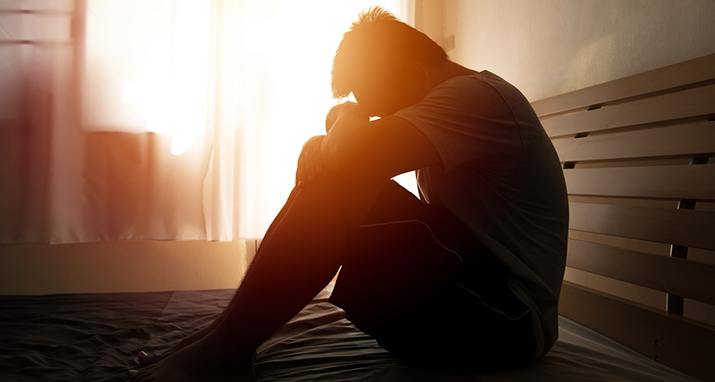Feeling S.A.D.? What can you do about it?
Category: Healthy - Body

Most of us feel a little down now and then. But if your melancholy occurs in sync with the turn of the seasons, you might suffer from what is known medically as seasonal affective disorder (SAD).
What Is SAD?
SAD is a type of depression related to changes in seasons—it begins and ends at about the exact times every year.
If you’re like most people with SAD, your symptoms start in the fall and continue through the winter months, sapping your energy and making you feel moody. Less often, it may also cause depression in the spring or early summer.
However, sadness can come from a condition you have, no matter the season you’re in.
Many years ago, I discovered why I felt sad when going to a joyful parade. The minute the parade started, I could feel the sadness and tears coming up, and I did not know why.
Until I was taking a class in Palliative Care and realized it was because I didn’t grieve my father, which I never thought of because I never cried but kept my emotions inside.
I think it is good to go inside and find the answer that you will find.
Symptoms of SAD may include: Not forget that we are all unique; it doesn’t fit all.
– Feeling depressed most of the day, nearly every day
– Losing interest in activities you once enjoyed
– Having low energy
– Having problems with sleeping
– Experiencing changes in your appetite or weight
– Feeling sluggish or agitated
– Having difficulty concentrating
– Feeling hopeless, worthless, or guilty
– Having frequent thoughts of death or suicide
Everybody doesn’t experience the same way, and we must be careful about that.

Possible Causes of SAD
Seasonal mood changes are believed to be related to the amount of sunlight we are exposed to, which is why SAD is more prevalent in northern latitudes, where the amount of sun is low during the winter.
The leading theory is that a lack of sunlight might stop a part of the brain called the hypothalamus from working correctly, which may affect the following:
• Production of melatonin – melatonin is a hormone that makes you feel sleepy; in people with SAD, the body may produce it at higher than normal levels.
• Production of serotonin – serotonin is a hormone that affects your mood, appetite, and sleep; a lack of sunlight may lead to lower serotonin levels, which is linked to feelings of depression.
• Body’s internal clock (circadian rhythm) – your body uses sunlight to time various essential functions, such as when you wake up, so lower light levels during the winter may disrupt your body clock and lead to SAD symptoms.
How to Overcome SAD
A range of treatments is available for this condition. We recommend consulting your doctor first to get a proper diagnosis. They can help you determine the therapy that’s right for you.

The main treatments include:
• Light Therapy
A treatment that encourages exposure to 2,500-10,000 LUX (or the measure of light intensity) for at least 30 minutes per day. Standard lighting in households or offices will get you only around 500 LUX, which is not enough to combat the effects of winter darkness (LUX is a measure of light intensity). A unique lamp called a lightbox is used to simulate exposure to sunlight.
• Plenty of Exercises
Some symptoms of SAD can be significantly improved or even stopped by exercise and increased outdoor activity, particularly on sunny days.
• Restful Sleep
Try to go to bed and rise at around the same time each day. Not only does this help to
normalize your body’s melatonin production, but it also gives your body sufficient time to rest, relax, and rejuvenate.
• Proper Diet
Ensuring that your diet contains lots of fish, fruits, and vegetables, drinking enough water, reducing or eliminating refined and processed foods, and minimizing consumption of saturated fat can help provide your body with enough energy to stay upbeat and active.
• Supplementation
Vitamins D and B12, folate, and omega-3 fatty acids benefit brain health. Ingredients such as St. John’s wort have also been traditionally used to help improve mood and may help treat mild to moderate depression.
B-Complex
There are eight essential B vitamins which work best when working together. Unfortunately, the typical Western diet doesn’t provide enough whole grains, leafy green vegetables, and fish needed to provide 100% of the Daily Value of the B vitamins.
B-Complex offers a perfect balance of all eight B vitamins, filling in nutritional B-vitamin gaps.
Remember to consult your health care provider before taking any herbal supplements, especially if you’re pregnant, nursing, or taking prescription medications.
Whatever you decide to do is your choice; choose wisely. The stores have many brands to choose from; do your due diligence.
For more information on your health!
To your health and Have a wonderful week,
Gaétane



Facebook Comments